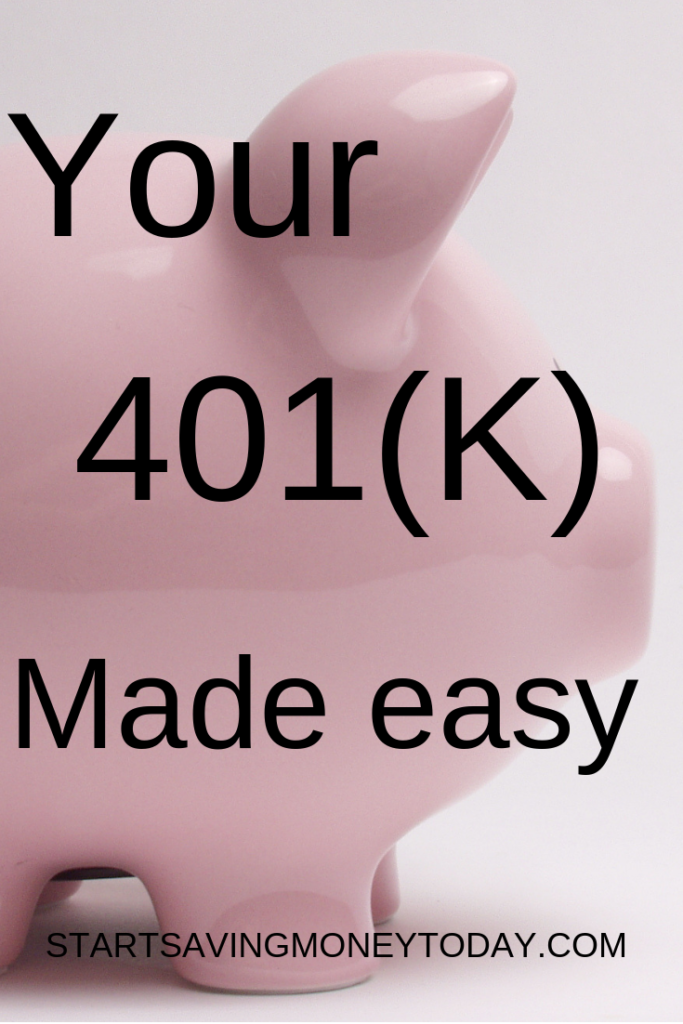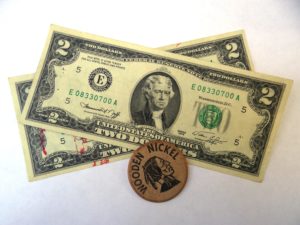What is a 401(k)
Do you know what a 401 k plan is? Sometimes called a 401(k). Here’s the reason I’m asking: Not long ago I was sitting in Starbucks enjoying a coffee. (If you’ve read some of my early posts, you know this is a special treat for me.) While I was there, I overheard to group of young people (they looked like office staff to me) talking about the retirement accounts available from their employers. As the conversation developed, it was pretty obvious to me they had no idea what they were talking about. None of them knew how much the minimum/maximum contributions they could make were. They asked each other if the employers were required by law to contribute to their accounts. One of them wondered if he could borrow against his account. Or, could he use it as collateral to get a loan? The word 401 k came up, and because that’s the type of retirement account employers make available most often, I’m sure some had active accounts. But—honestly—it sounded like none of them had gone to a seminar or read any material related as to what a 401(k) plan is.
So…what is a 401 k plan? Before I explain that, I’m going to tell you that if you are frugal you will know what’s going on with your money, what it’s doing for you. And never jump into any plan just because someone (your friend, your parents, your employer…) says you should. It’s your job to know the facts.
Now, thanks to my employer, I have a 401 k plan. So…what is a 401 k plan?
What is a 401 k
A 401(k) is the retirement plan offered to employees most often by their employers. A great number of 401(k) plans accounts are mutual funds, but depending on the plan it could include other types of investments.
The 401(k) plan is popular because it gives employees a tax break. The funds an employee/employer contributes to the 401((k) plan and the interest/dividends are not taxed until the money is withdrawn from the account. That means there is more money to reinvest and earning potential is increased.
Note: The 401 k plan is not available to the self-employed or employees of the federal government. If you are in one of those categories there are other retirement programs available to you. (I plan to address those some other time.)
Who provides this retirement account
As I said above, an employee’s 401(k) plan is a retirement plan sponsored by the employer. The employee designates a set dollar amount or percent out of his gross pay to be contributed from each paycheck (pretax). This means it’s not taxed as income at the time the employee contributes to his retirement plan. But…anytime a withdrawal is made from the account, the amount taken will be taxed.
Your employer’s interests
Since your employers sponsor your 401 k plan, they determine when you are eligible to start contributing to it; they want to be reasonably sure you will be with the company for a while.
Also, many employers have some form of matching funds program. It may be dollar for dollar or a dollar for every two you contribute. There are a number of variations. Because they want to feel they will benefit from having employed you, there may be a period of vesting before you can access any funds the company contributes.
Being “vested” simply means you own money contributed by your employer in your 401 k plan. You can be fully or partially vested. The company you work for sets the terms and length of the vesting period. If you leave the company’s employ before you are fully vested you may forfeit some or all the contributions made by your employer. (Any funds you contributed from your paycheck are yours. (And, by the way, the only contributions you can make will be from your pay.) Also, once you are fully vested, your employer can’t renege on any contributions they’ve already made.
It’s always best to verify all information through your employer or the company your employer has designated to manage your 401 k plan.
Matching funds
Employers don’t have to have a matching funds policy, but they frequently do. As I said above, there are many variations on the practice. Matching on a percentage basis is fairly common. For example, your employer may commit to match you up 2% of your wages or salary. If you make $60,000 a year, and you contribute 2% of that to your 401 k plan, that’s $1200. Your employer will also add $1200. (Most companies don’t contribute to employees’ 401 k plan account every pay period. They have a set date once a year upon which they make their contribution to all employee 401 k plan funds.) For the purposes of this example, you could commit more than 2% of your pay, but your employer’s contribution will max at 2%—$1200. Should you contribute less than 2%, the employer’s matching funds will reflect that.
The IRS
You certainly aren’t surprised that the tax people have an interest in your 401(k) plan, are you? … It’s money.
I’ve already mentioned that the contributions from your pay are not taxed when they’re made, but taxes do apply when funds are withdrawn. In addition, early withdrawals are subject to penalties. Early withdrawals are funds taken from the account before you reach the age of 59 ½ (usually). After all, your 401(k) plan is a retirement account.
Note: When you leave a company’s employ, you can keep your funds in your 401 k plan and arrange to make contributions directly to the fund administrators. (And you do want to continue making them, or it’s possible administration fees will consume your money.) If you decide to move your funds to a different account because you have a new employer, using a different administrating company, it can be done (rolled over) without penalty via communication between the old and new administrators. There is a way for you to do that yourself, but it gets complicated and you risk penalties.
Also, the IRS has set contribution limits to prevent you from overly minimizing your current income taxes.
To prevent making a mistake by over contributing or failing to maximize on the limit, check with your employer’s Human Resource Department or the company your employer has designated as the administrator for the 401 k plan.
Who manages your 401 (k)
Employers usually designate an administrator like Vanguard or Fidelity to oversee your account. The administrator will email you updates and important events. They help with paperwork. Also, you’ll contact the administrator if you want to make changes to the amount you contribute or how you are investing.
By working with the fund administrator the employee is usually able to control how money is invested. That means you can invest in utilities, medical, the overseas market, and more. Most plans offer a spread of mutual funds composed of stocks, bonds, and money market investments. The employee can tell the fund administrator how much risk he is willing to take. (Note: The general trend is to become more conservative as the employee nears retirement. If you think about it, that does make sense: Limit your risk when you’re getting close to needing the money.)
In case you’re wondering, you pay the administrator of your account. When you make contributions they take out a very small amount to cover the transaction, or they may have a monthly service charge. When you make a withdrawal they deduct the appropriate amount for taxes and send it to the IRS. (If you make an early withdrawal, they also deduct the amount due in penalties.)
How much should you contribute
How much should you contribute to your 401(k) plan? Ideally, as much as you legally can. Of course, you still have to live and eat (and do a lot more, too). You need to budget so your income efficiently covers your needs for living. One of those needs is preparing for your future, your retirement. Your budget can be a guide to how much you can contribute to your 401(k) plan retirement fund.
No worries
We’ve all heard the stories from the not so distant past about employers who stole their employees’ retirement. (Think Enron…) If your retirement account is a 401(k) plan, you don’t have to worry about that. Any contributions you make belong to you and cannot be accessed by your employer. And as I said earlier, after an employee is fully vested, employers cannot take back their contributions to your account. You access your funds through the plan administrator—who works for you, not for your employer.
Never miss another post like me on Facebook



